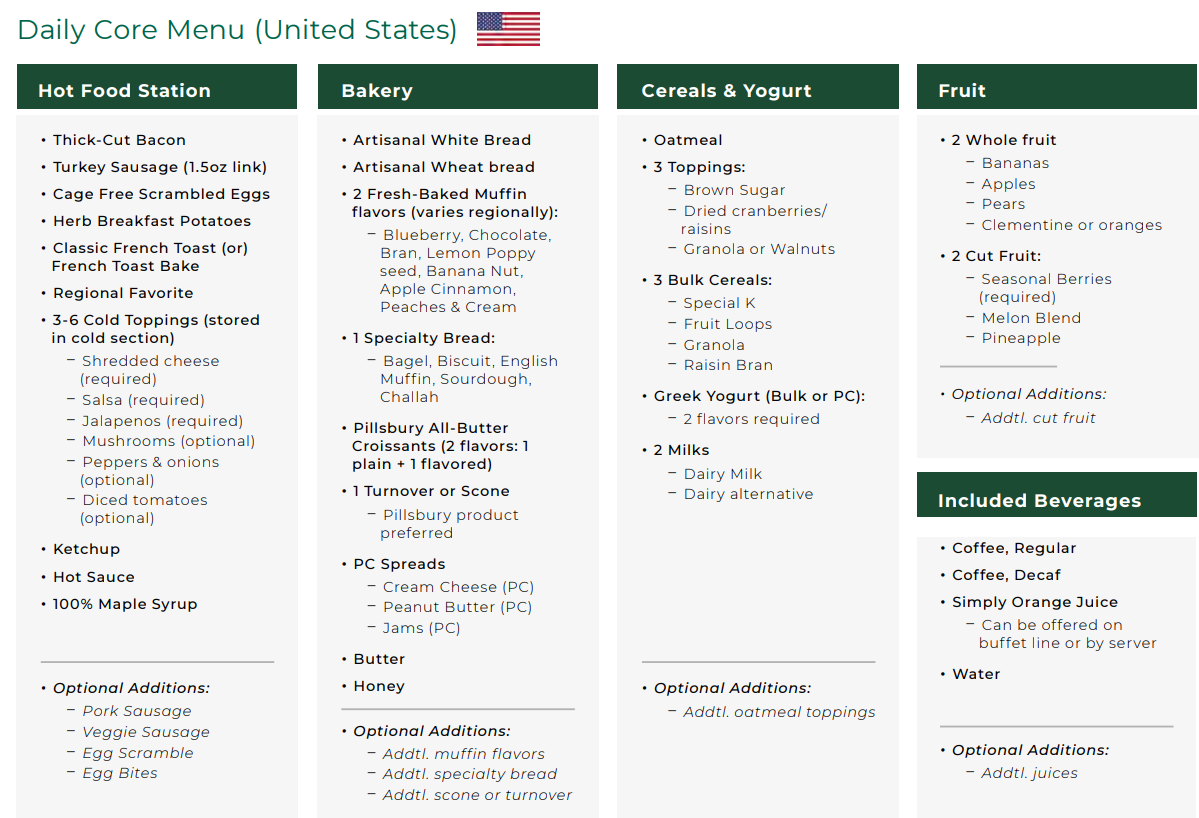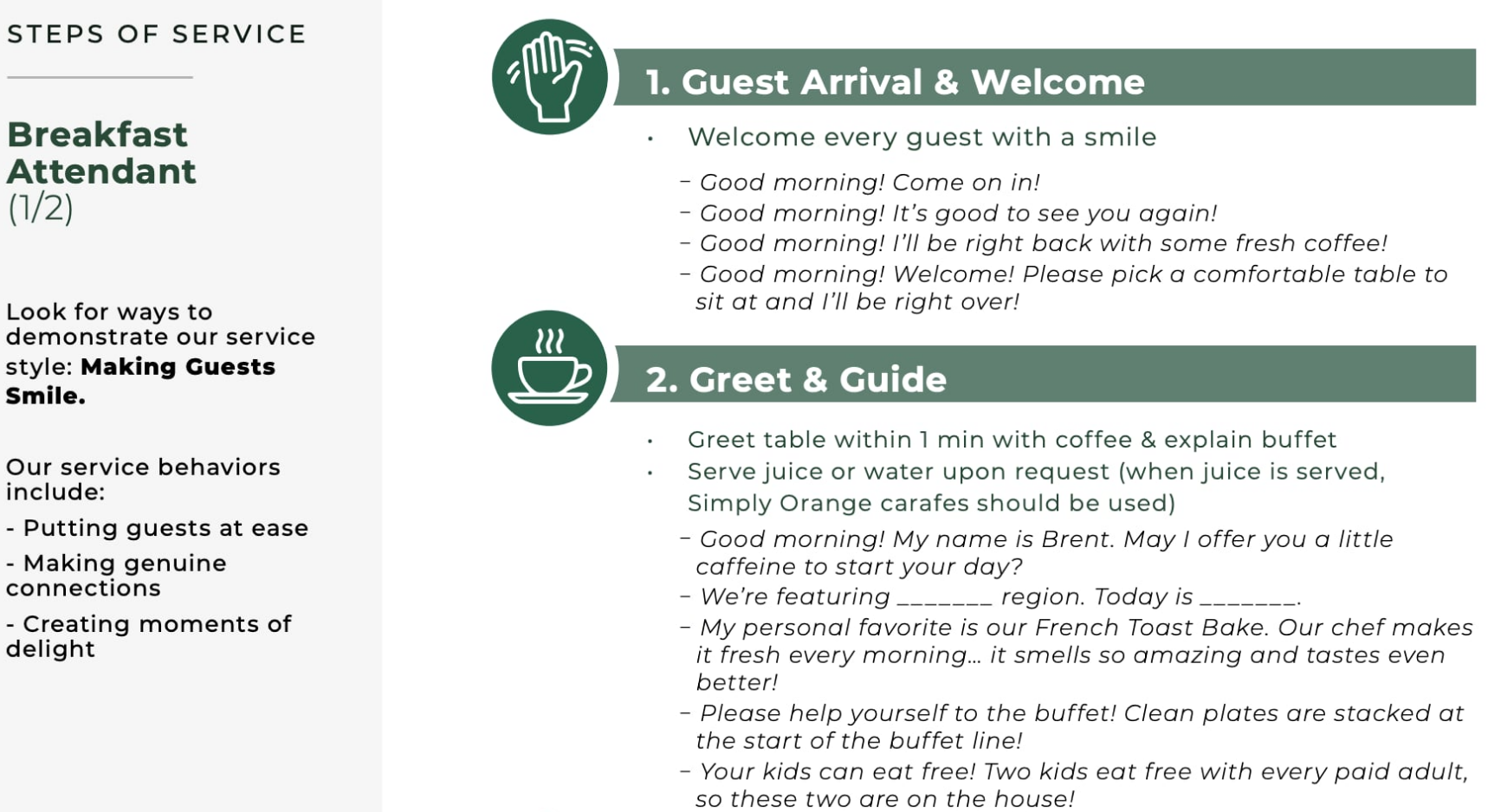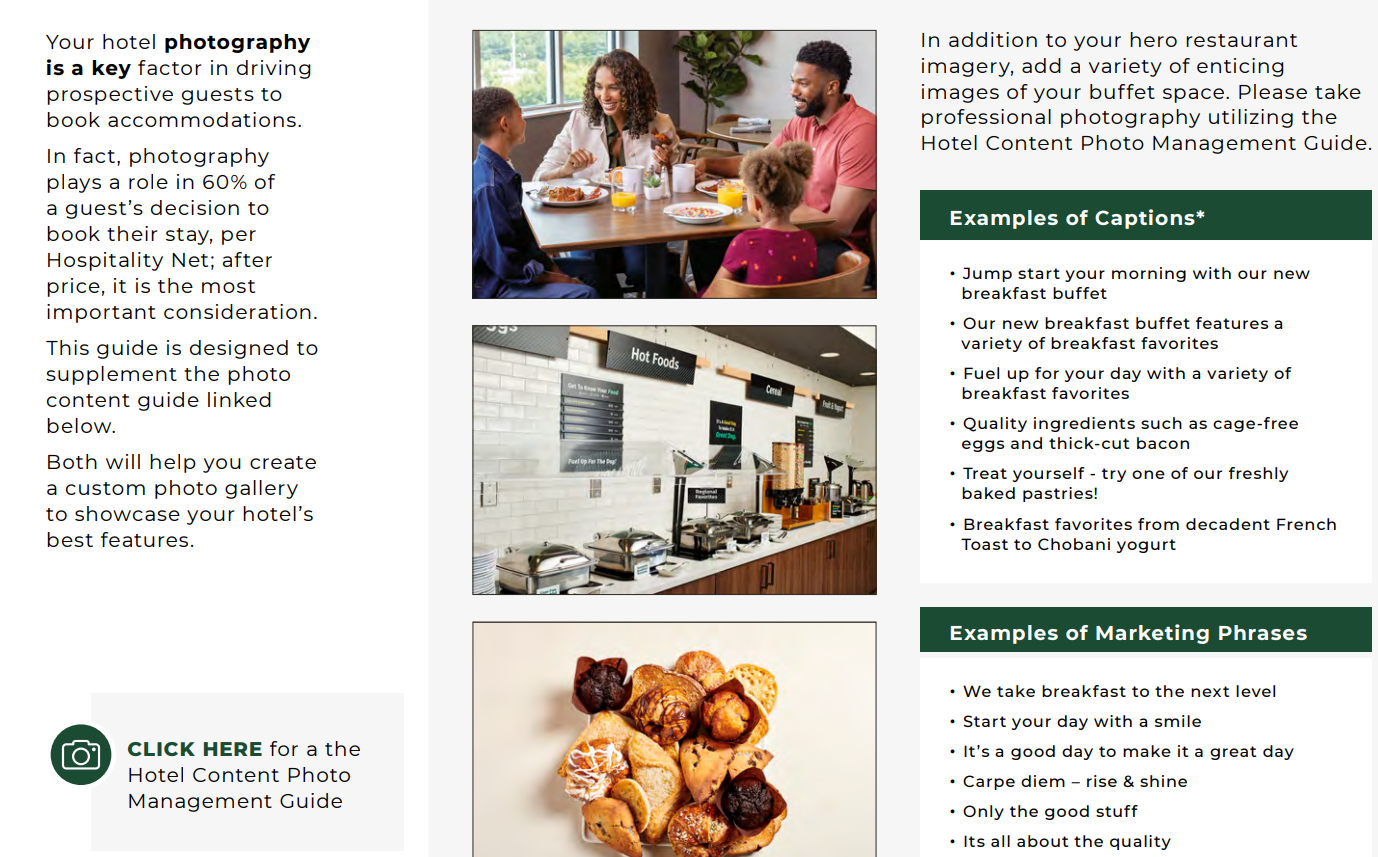Holiday Inn hotels in the U.S. and Canada are required to eliminate à la carte breakfast by December 1, offering breakfast buffet only. I reviewed the chain’s buffet standards that apply to all properties without “an approved waiver on file to deviate from this standard.” I think there are several pieces to it that will surprise guests.

Minimal Operation
The first thing is how minimal the required operation actually is. Breakfast only has to be open 3 hours a day. If a hotel offers breakfast, they’re not supposed to offer a cooked-to-order menu. No customized eggs.
Staffing can be as low as two people – one cook and one breakfast attendant per shift. They only “recommend” adding another front of house attendant when demand exceeds 45 guests. That can mean 60 – 80 people all hitting breakfast in a short wave with basically one person on the floor.
Minimum food variety is tightly defined. For example, only two whole fruits and two cut fruits are required, three bulk cereals, and very specific topping lists.

What Fresh Actually Means
Pastries can be reused for up to 24 hours at room temperature. Pastries not used on the buffet should be wrapped and stored at room temperature (specifically not refrigerated) and can have a 24-hour shelf life. “Fresh-baked pastries” can be from yesterday.
Leftover bread is supposed to be repurposed for the next day’s French toast bake. That’s not inherently unsafe, but a different reality than the “freshly prepared” language in the chain’s breakfast marketing copy.
Juice can also be “yesterday’s juice.” Procedures say to wrap juice with plastic wrap, chill it, and reuse it the next day, up to two shifts maximum (and “do not refill” the same vessel).
Almost everything is standardized and largely convenience product. Required use of branded ingredients—Pillsbury/Bridor all-butter frozen croissants, Quaker oatmeal, bulk cereals, Simply Orange —makes the experience consistent, but the “chef-driven” framing is not really delivered.
Condiments and toppings are turned over more slowly than you’d expect. Hot food itself must be discarded after service, but some toppings and condiments (jams, peanut butter, honey, etc.) are just topped off, wrapped, and reused; only oatmeal toppings are explicitly discarded and reset every day.

Where Did The Sneeze Guards Go?
Sneezeguards are not required over hot food by IHG. The planograms explicitly say sneezeguards over hot food are “no longer required by IHG,” only possibly by local health departments. Sneezeguards are required over the cold station (fruit & yogurt). If you see exposed eggs, bacon, potatoes, and French toast with no guard that’s in line with brand guidance.
Sell, Sell, Sell
Staff are coached to “sell” breakfast hard. There are detailed scripts for guests who thought breakfast was free, for guests asking for à la carte, for late arrivals, and for pushing room-charge to earn points.


Service is designed around one attendant circulating, not table service. The steps of service emphasize greeting with coffee, explaining the buffet, then mostly check-backs, bussing, and dropping the check “for guest convenience.” It’s closer to casual cafeteria service than a restaurant, by design.

What To Look For In A Holiday Inn Breakfast
If you care about quality, service, and hygiene that meets these minimal standards, then think of it in these three buckets.
If they’re following brand standards you should see scrambled eggs; bacon and turkey sausage; herb breakfast potatoes; French toast or a French toast bake; and at least one regional favorite in a chafer, rotated every few days (burrito, chicken biscuit, hash, etc.). Eggs and potatoes should be refreshed roughly every 30 minutes and oatmeal stirred every 10–15 minutes.
If you see congealed eggs with a thick skin, dried-out potatoes, oatmeal crusted on the sides of the kettle they’re not compliant. Hot food must be held at or above 140°F, and they call out failing to maintain temps as a critical violation of brand standards. You should occasionally see staff checking temps with a probe thermometer and adjusting, not just ignoring the line. I’d be surprised if this happens.
The cold fruit and yogurt station still requires a sneezeguard. You shouldn’t see any brown bananas, mushy berries, or bruised apples and pears.
Another piece that would actually surprise me if it were implemented on-property is chairs and tables sanitized (not just wiped) after each use; sugar caddies, condiment caddies, salt & pepper shakers cleaned and sanitized between guests; eggs held for just 15 minutes; every guest welcomed with a smile, “Good morning, come on in!”
Quick tells on compliance:
- Cold station: sneeze guard present and reasonably clean, fruit looks fresh not desiccated
- Hot items: eggs and potatoes look recently stirred, chafers aren’t half-empty and crusted over, staff open and check/stir.
- Pastries: in a proper case, not just open trays, case and tongs clean.
- Tables: bussed promptly, surfaces wiped down with proper sanitizer, caddies and shakers aren’t grimy.
- Service: someone greets you, offers coffee, and actually talks up the buffet.


Should I spend $75,000 on a CSR so that I can achieve this level of luxury?